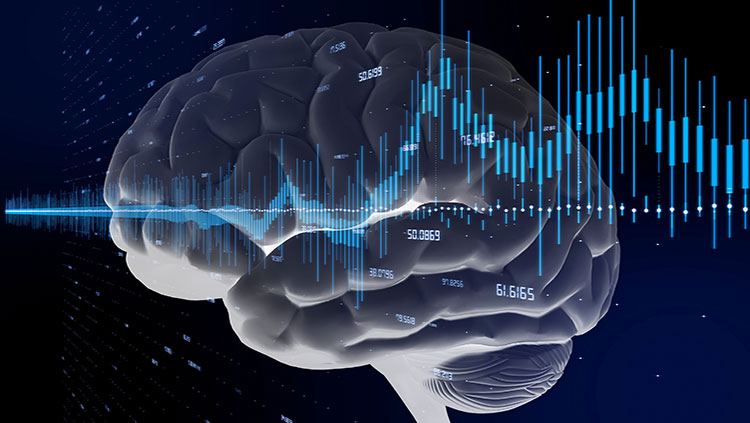Researchers Aim to Restore Youthful Brain Activity in Older Adults
- Published4 Nov 2021
- Author Alexis Wnuk
- Source BrainFacts/SfN

Aging changes our brainpower in subtle ways. Our reaction times slow. We may take longer to recall the name of the neighbor we just met. Neuroscientists have a few ideas about what’s going on. One idea gaining momentum pinpoints a decrease in neural variability, the moment-to-moment fluctuations in brain activity.
Now, in a proof-of-concept study, University of Michigan researchers found a common antianxiety drug increases neural variability in older adults — essentially making old brains look like young brains. The findings, first reported November 1 at the annual conference of the Society for Neuroscience, are now published in JNeurosci.
“The study provides some really exciting preliminary evidence … that brain signal variability can be boosted by pharmacological manipulation,” Lucina Uddin, a neuroscientist at UCLA who wasn’t involved in the study, said in an email. “Overall, it's a really intriguing advance that is in line with a theory that many neuroscientists are slowly beginning to endorse — namely, that brain signal variability contributes critically to brain function and should not be considered noise.”
Functional magnetic resonance imaging, or fMRI, can produce striking pictures of brain activity. Ask a volunteer to look at a word, solve a math problem, or just sit quietly, and fMRI will show their brains light up with activity. But the technicolor images average brain activity over time. Actual activity varies from moment to moment. Neuroscientists have, for the most part, treated this variability as noise — radio static that needs to be stripped away to amplify the real signal.
It turns out noise may be important. Studies have documented neural variability declines with age, and it’s linked to poorer cognitive ability. Senior study author Thad Polk likens neural variability to tennis star Roger Federer preparing to return a serve. “He's probably not standing flat-footed. He’s probably jumping around, moving, getting ready to respond,” Polk said at a press briefing on November 1. “He is dynamic and prepared for motion.”
Neural variability is the brain equivalent of that ready stance. “It seems like it helps the brain prepare to perform different cognitive tasks,” Polk said. Polk and PhD student Poortata Lalwani wanted to know if they could turn up this dynamic activity in older adults. Other researchers had found a drug that dampened inhibitory signaling in the brain decreased neural variability in rats. “So we wondered, could we increase neural dynamics by increasing inhibition?” Polk said.
They brought 20 young and 24 older adults into the lab for cognitive testing and two fMRI brain scans on two different days. Before each scan, the volunteers received either a small dose of the benzodiazepine lorazepam — a common antianxiety drug known to increase inhibitory signaling in the brain — or a placebo pill.
The drug improved brain dynamics in older adults. “We were able to show that on drugs that increase inhibition, older adult brain dynamics looked a lot more comparable to young adults,” Lalwani said. What’s more, adults who performed worse on cognitive tests showed the greatest improvement in neural variability.
It remains to be seen whether the younger-looking brain dynamics translate into a cognitive boost. “We have not yet found a causal relationship where we can actually manipulate variability and show it changes behavior,” Polk said. “That’s what we hope to get to.”
He cautioned that they’re not suggesting benzodiazepines represent a viable treatment for waning brainpower in old age. The drugs carry a lot of side effects, such as drowsiness and confusion. “We would not … expect that just taking a benzodiazepine would improve cognition,” Polk said. “In fact, if anything, we would think that would probably make it worse.”
“What we want is a way to affect neural dynamics without the side effects,” he added.
This article was originally published with the title "Antianxiety Drug Restores Youthful Brain Activity in Older Adults."
CONTENT PROVIDED BY
BrainFacts/SfN



.jpg)













